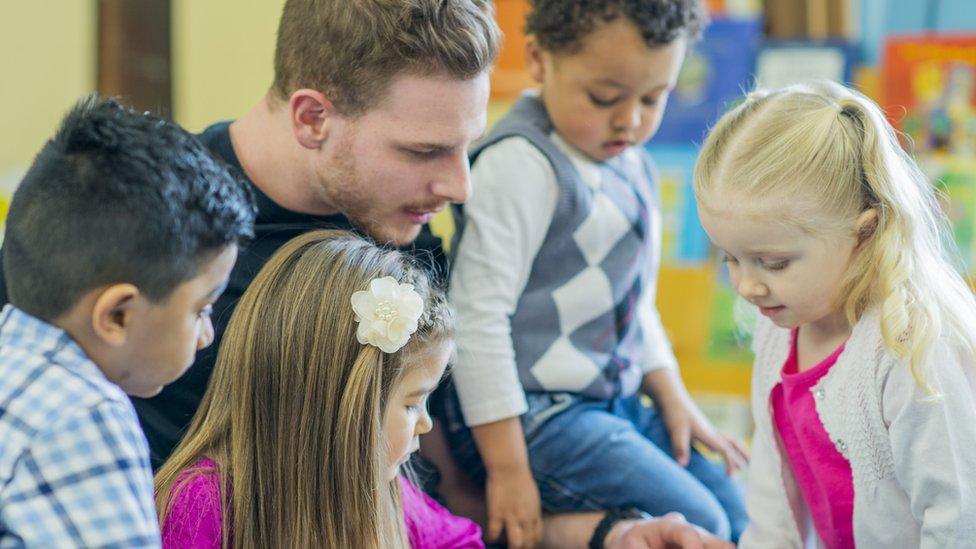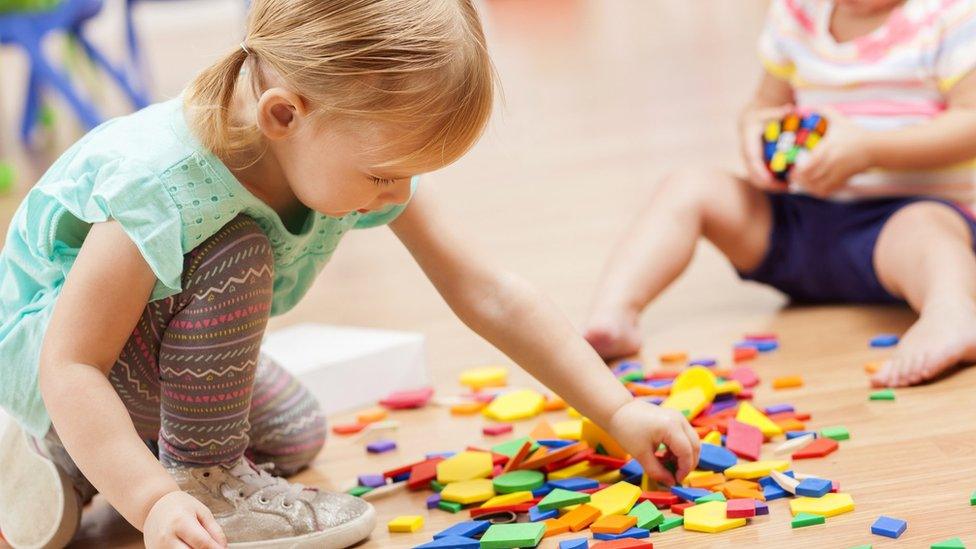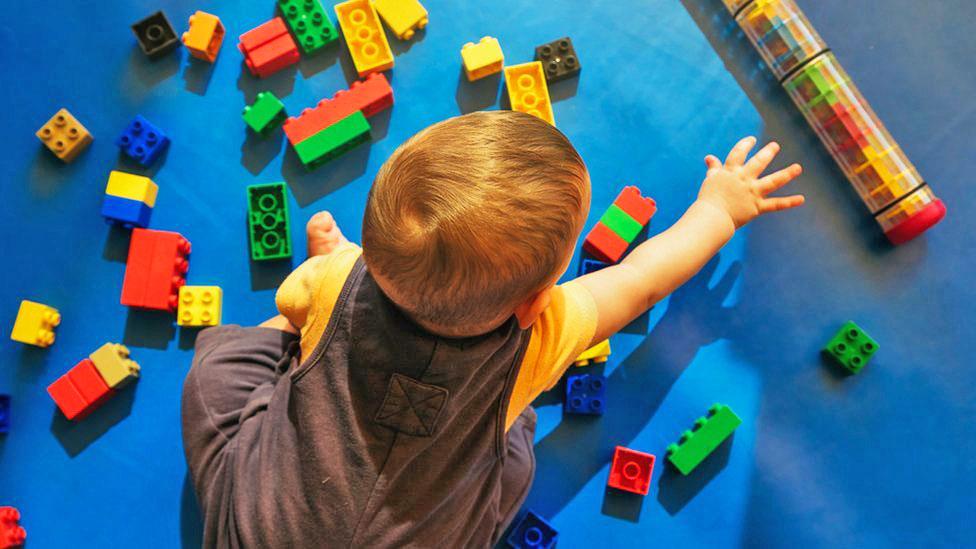Tax-free childcare helps just a fifth of families
- Published
- comments

Just 91,000 families made use of the new Tax-Free Childcare system in December, according to new government data,
That is far below the expected number. Official figures, analysed by the BBC, show the government had planned and budgeted for 415,000 families to be using the system by October 2017.
By December 2018, just 22% of that number had signed up.
The government urged families to see if they qualified.
The shortfall is partly because the full rollout was pushed back following technical glitches with its website, but almost a year after the full rollout, take-up is still far lower than anticipated.
And while the government had initially expected 324,000 more families to sign up, far more are potentially missing out. In total, an estimated 1.3 million could qualify for the help, meaning only about one in 14 eligible families has done so.
That's costing people money - the Office for Budget Responsibility had forecast spending £800m on Tax-Free Childcare in 2017-18, but that was revised down to £37m specifically because of low take-up.
Payment errors
In 2018, the Family and Childcare Trust's annual survey showed that the cost of a part-time nursery place for a child under two was £122 per week, a rise of 7% in a year.
Families who use Tax-Free Childcare receive £2 from the state for every £8 they pay in, up to a value of £2,000 per child per year.

The new scheme replaces Childcare Vouchers, which is now closed to new applicants. The government says Tax-Free Childcare is better than the old system as it is open to both employed and self-employed people, meaning about a million more families qualify for help.
It is also paid per child rather than per parent, allowing lone-parent households to get the same amount of support.
However, the scheme has suffered from technical glitches - including last year when 22,000 payments were not passed onto childcare providers - and the help available has been criticised for adding to parent confusion.
'Tangled web of support'
Julia Waltham, head of policy at the campaign organisation Working Families, says more should be done to help parents identify the best way to get help with their childcare costs.
"The reason for the low take-up of Tax-Free Childcare could be because parents have chosen to stick with employer-supported childcare vouchers; and we know from our own research that working parents are increasingly reliant on informal childcare support from family, often grandparents," she said.

"But the fact remains that there are seven types of childcare support - each with different eligibility criteria and different ways of interacting with each other - available to parents and carers.
"This tangled web of support can be complicated, and difficult for parents and carers to navigate.
'Essentially free money'
Sarah Coles, personal finance analyst at Hargreaves Lansdown, says not enough is being done to inform parents of their options: "When the market is getting behind something, they put money into communications and things happen.
"Tax-Free Childcare, however, is in the hands of the government, and so far there's every sign they're not throwing themselves behind efforts to let parents know about the free money on offer."
A government spokesperson said: "Tax-Free Childcare is a great offer for working parents and more and more families are benefitting from it. We're urging all parents to check the Childcare Choices website to see how much they could save, and to apply."
They added that the number of parents benefitting from Tax-Free Childcare had almost doubled since March last year and they were running a national campaign to raise awareness.
- Published5 February 2018

- Published15 January 2018

- Published13 February 2018
